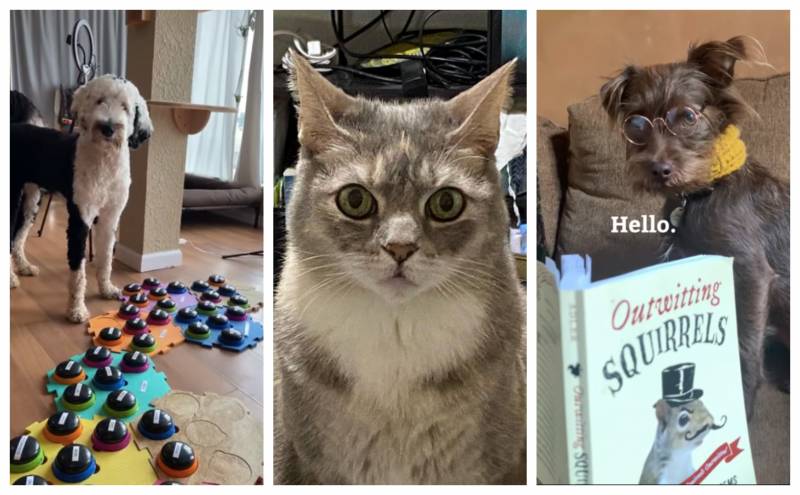We’ve all done it: put on a silly voice and talked on behalf of our pets. The fancy word for it is ventriloquating, and in 2019, The Atlantic talked to pet-owners about why they did it. (“The voice I give my dog is somewhat sarcastic or critical,” one 31-year-old man admitted. “His most common phrase is ‘You son of a bitch.'”) Chances are, if you come across someone who doesn’t ventriloquate for their pets, that restraint is likely born from a wholehearted belief that their animal already is talking. Like Kermit the cat, here:
For a small but increasing number of pet owners, however, having a talking animal at home—one that speaks English, no less—is now an actual, bonafide reality. It all started a couple of years ago when Stella, a Catahoula-Blue Heeler mix, was taught to communicate by her speech-language pathologist owner. Christina Hunger was inspired to give Stella a soundboard after teaching non-verbal children to communicate in similar ways. And the results were undeniably impressive.


